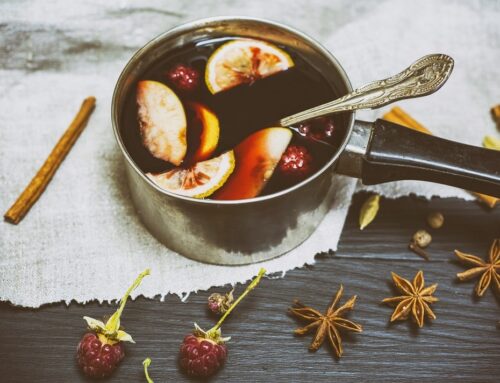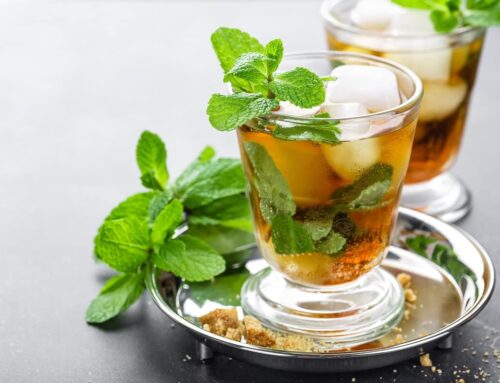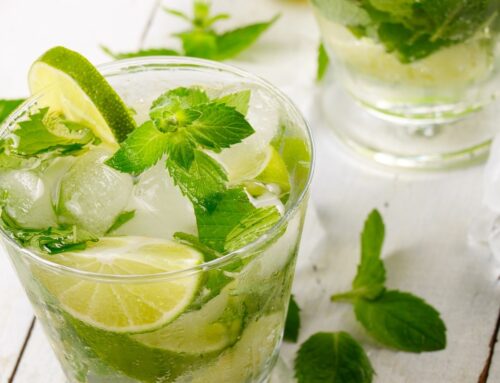Your favorite bottle of wine may just double as your favorite ingredient in cooking. If cooking with wine intimidates you, Raising the Bar Liquors is here to give tips, tricks, and advice on using vino in the kitchen. Cooking with wine adds a distinct, rich flavor to your dish, enhancing the entire meal. Wine is known to elevate the taste of the other ingredients and seasonings in the dish. Similar to those other ingredients and seasonings, it is important to know how wine works and the best techniques for cooking and baking.
With an abundance of different types of wine, which wine is the best to cook with? And, how much wine should I add to the dish? Keep reading for the ultimate guide to cooking with wine along with Raising the Bar’s favorite recipes to incorporate your favorite red or white.
10 Tips for Cooking with Wine
1. Cook with the wine you would drink
The most common rule when cooking with wine, some may even call it the ‘golden rule’, is to never cook with a wine you wouldn’t drink. Raising the Bar recommends using a wine that is fresh and uncorked. Use wine to cook with that you would otherwise pour a glass from.
On the contrary, expensive wine is not necessarily the best wine to cook with. There is no need to break the bank when it comes to cooking with wine.

2. Never use ‘cooking wines’
Wines labeled ‘cooking wines’ are surprisingly low quality and taste more like juice than wine. Furthermore, cooking wine can be more expensive than a decent bottle of your favorite red or white. Save your money and cook with the wine you love.
3. Reduce other acidic ingredients
Before cooking with wine, take a look at the other ingredients in the recipe. Many recipes call for acidic components like vinegar or lemon juice. Lessen the amounts of other acidic and sweet elements in the recipe if you’re adding wine. By reducing or even cutting out a few of these ingredients all together, you maintain the correct levels of sugar in your dish.
4. Try wine in a marinade
Speaking of acidic ingredients, did you know acid in a marinade helps tenderize the exterior of meat? Next time you are creating a marinade, try adding wine to your concoction. A wine-based marinade adds excellent flavor to meat, poultry, and seafood while also keeping the dish moist.
Raising the Bar’s favorite red wine marinade is the perfect way to utilize the last little bit of red wine that may not be as good the next day. Combine red wine, olive oil, lemon juice, salt and pepper, and minced garlic. Pour the mixture into a zip-lock bag with your filet and refrigerate the marinade and steaks for 4 to 6 hours. Lastly, prepare the steaks to your liking and enjoy!
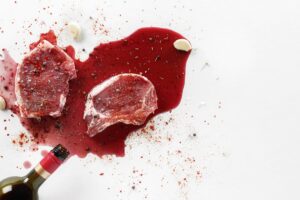
5. Substitute wine with fats and oils
Wine makes an excellent fat and oil substitution. If you are trying to reduce the fats consumed in your diet, cooking with wine is the way to go. Substitute wine for butter and oil when sauteing vegetables or even when baking! In the same way of adding 3/4 cup of oil when baking, try adding 3/4 cup of white wine to the batter instead.
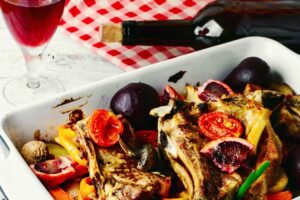
6. Use non-reactive cookware when cooking with wine
When cooking with wine, an important tip to remember is to use non-reactive cookware. Consequently, because of wine’s acidity, thickening a liquid mixture with wine in a seasoned cast iron skillet should be avoided at all costs. For the best results bearing rich flavors and moisture, add wine to recipes made in a skillet or a slow cooker.
7. Add wine slowly when cooking with wine
As with any ingredients, it is important to know how and when to add the flavor in. Raising the Bar recommends adding wine slowly. Adding wine slowly lets the essences and flavors of other ingredients to develop.
8. Know how to pair
The key to figuring out which wine to cook with is to use wines that you would normally pair to drink with that recipe. Moreover, try to pair wines from the same region as the food you’re cooking. Crisp white wines like Pinot Grigio pair beautifully with pork, chicken, and seafood. Take your spaghetti to the next level with a delicious Cabernet or Pinot Noir.
Tip: Marsala, Madeira, Port, and Sherry are four of the best, versatile wines to have on hand for cooking.

9. Check the dates
For best results, make sure you are cooking with wine that is uncorked and fresh. Drain the wine if it tastes like vinegar or if it has been open longer than 4 to 5 days.
10. Follow correct ratios
Ratios can be difficult to calculate when cooking with wine. As mentioned above, add wine slowly to the recipe. For many soups, gravies, and stews, the amount of wine needed depends on the concentration and intensity of the wine and foods in your meal. As a general rule of thumb, soups and gravies call for 2 tablespoons of wine per cup of liquid. In contrast, sauces drop to an even ratio of 1 to 1.
Is there any alcohol left when cooking with wine?
Many people believe alcohol evaporates when cooking and simmering in the liquid. On the contrary, unless the dish is cooking for over 3 hours, there will be remnants of alcohol in the meal. How much alcohol usually remains? The quantity of alcohol that stays in the dish depends on how the meal was made, the temperature the food was cooked, pan size, and the length of cooking time. If you’re wanting to reduce the alcohol in the dish a great deal, Raising the Bar recommends slowly simmering the ingredients in a wide pan for at least 2.5 hours.
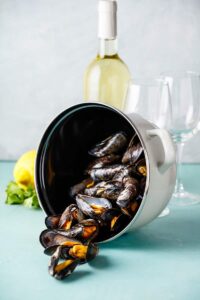
Final Sips on Cooking with Wine
Next time you’re preparing a meal, consider adding wine to boost the flavor and complement the other ingredients. The time to be creative is now, and Raising the Bar has an exceptional assortment of reds, whites, and sparkling wines. From savory appetizers to mouth-watering desserts, incorporating wine in the kitchen can take your meals to the next level. Follow our 10 top tips and let Raising the Bar to know your favorite recipes.

